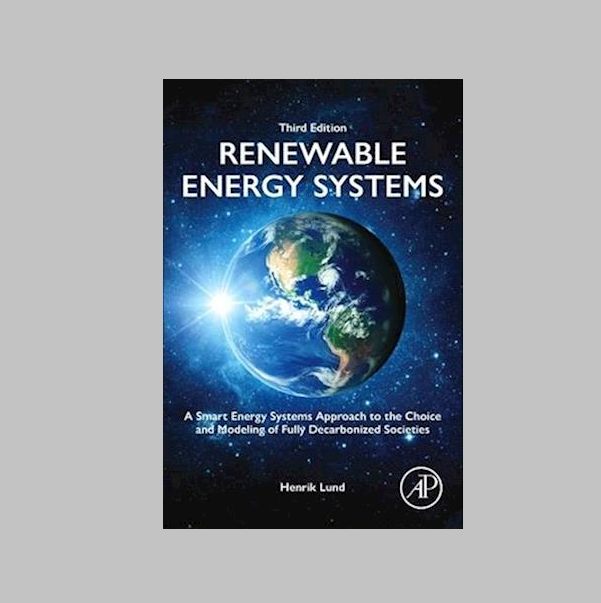About EnergyPLAN
The EnergyPLAN model is developed by the Sustainable Energy Planning Research group at Aalborg University in cooperation with PlanEnergi and EMD A/S. The research group studies energy planning and management in an interdisciplinary perspective. Focus is placed on energy planning in relation to technology, geography, economic and institutional conditions. The research conducted can be divided into three main areas of study:
- Energy System Analysis
- Feasibility studies
- Public regulation viewed in the light of technological change
Introduction
The main purpose of the EnergyPLAN model is to analyse the energy, environmental, and economic impact of various energy strategies. The key objective is to model a variety of options so that they can be compared with one another, rather than model one ‘optimum’ solution based on defined pre-conditions. Using this methodology, it is possible to illustrate a palette of options for the energy system, rather than one core solution. This could classify EnergyPLAN as a ‘simulation’ tool rather than an optimisation tool, even though there is some optimisation within the model.
Furthermore, the aim of EnergyPLAN is to model the ‘finishing point’ of the energy system rather than the starting point. The focus is placed on the future energy system and how that will operate, rather than on today’s energy system. Therefore, EnergyPLAN includes relatively detailed modelling of future technologies such as biomass gasification and synthetic fuels, but relatively aggregated modelling of today’s technologies such as power plants. The focus is on the future rather than the present.
User-friendly tab sheet model
The EnergyPLAN model has been developed and expanded on a continuous basis since 1999. It is a user-friendly tool designed in a series of tab sheets and programmed in Delphi Pascal. Input is defined by the user in terms of technologies and cost specifications.
Design of energy planning strategies
The main purpose of the model is to assist the design of national or regional energy planning strategies on the basis of technical and economic analyses of the consequences of implementing different energy systems and investments. The model encompasses the whole national or regional energy system including heat and electricity supplies as well as the transport and industrial sectors.
Deterministic input/output model
The model is a deterministic input/output model. General inputs are demands, renewable energy sources, energy station capacities, costs and a number of optional different regulation strategies emphasising import/export and excess electricity production. Outputs are energy balances and resulting annual productions, fuel consumption, import/export of electricity, and total costs including income from the exchange of electricity.
EnergyPLAN compared to other models
Compared to other similar models, the following characteristics of EnergyPLAN can be highlighted:
-
- EnergyPLAN is a deterministic model as opposed to a stochastic model or models using Monte Carlo methods. With the same input, it will always come to the same results. However, as we shall see in Chapter 5, the model can perform a calculation on the basis of RES data of a stochastic and intermittent nature and still provide system results that are valid for future RES data inputs.
-
- EnergyPLAN is an hour-simulation model as opposed to a model based on aggregated annual demands and production. Consequently, the model can analyze the influence of fluctuating RES on the system as well as weekly and seasonal differences in electricity and heat demands and water inputs to large hydropower systems.
-
- EnergyPLAN is aggregated in its system description as opposed to models in which each individual station and component is described. For example, in EnergyPLAN, the district heating systems are aggregated and defined as three principal groups.
-
- EnergyPLAN optimizes the operation of a given system as opposed to models that optimize investments in the system. However, by analyzing different systems (investments), the model can be used for identifying feasible investments, as we shall see in Chapters 5 and 6.
-
- EnergyPLAN provides a choice between different regulation strategies for a given system as opposed to models into which a specific institutional framework (such as the Nord Pool electricity market) is incorporated.
-
- EnergyPLAN analyzes 1 year in steps of 1 hour as opposed to scenario models analyzing a series of years. However, several analyses each covering 1 year may of course be combined into scenarios.
-
- EnergyPLAN is based on analytical programming as opposed to iterations, dynamic programming, or advanced mathematical tools. This makes the calculations direct and the model very fast when performing calculations. In the programming, any procedures that would increase the calculation time have been avoided, and the computation of 1 year requires only a few seconds on a normal computer, even in the case of complicated national energy systems.
-
- EnergyPLAN includes hourly analyses of the complete smart energy system, i.e., district heating and cooling as well as electricity and gas grids and infrastructures, as opposed to models which have a sole focus on, for instance, the electricity sector.
The Sustainable Energy Planning Research Group
Read more about the research group behind the EnergyPLAN model.
Read moreContact
If you experience further challenges using the model that are not answered in any one of pages at the site, you are more than welcome to contact us and we will try to help you.
Email us hereBook, 3rd Edition out now

3rd Edition Renewable Energy Systems – A Smart Energy Systems Approach to the Choice and Modeling of Fully Decarbonized Societies
By Professor Henrik Lund
List price: USD 100.00 / GBP 76.76 / EUR 87.20
Buy here